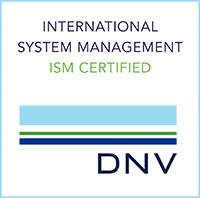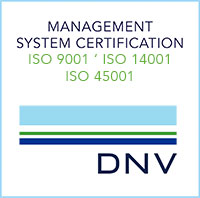

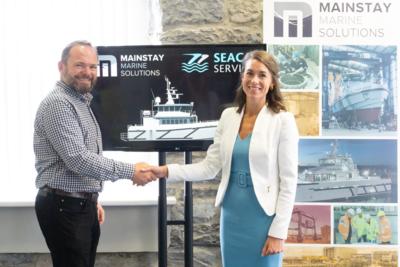
Pembrokeshire, Wales, 13 June 2023 — Seacat Services, class-leading offshore energy support vessel operator, announces its partnership with Mainstay Marine Solutions, specialist marine engineering firm, to build the 20th vessel in its fleet, and the fifth Seacat Chartwell Ambitious design.
The partnership comes amidst ongoing complexities in the UK shipbuilding market, where skill shortages and a lack of financial support from the UK Government have driven up manufacturing costs and derailed local content goals across the industry. Though progress has been made to alleviate this pressure via the Home Shipbuilding Credit Guarantee Scheme, it has yet to launch in a meaningful capacity for vessel operators and builders, who must continue to navigate harsh market forces in order to provide local content.
But despite an array of other subsidised opportunities available overseas, Seacat has continued to solely invest in UK newbuilds, with this new order taking its total spending in that pursuit to more than £65 million over the last decade. The partnership with Pembrokeshire-based Mainstay Marine represents an ongoing and enterprising commitment to bolstering the local supply chain in the face of considerable challenges.
In its support of the offshore wind market, the Chartwell Ambitious responds to the need for low-emissions, cost-effective vessels, with the aluminium catamaran’s optimised hull form offering efficient fuel use as well as stability and manoeuvrability in harsh conditions. At 25.2m in length, it has the capacity to transport up to 24 industrial personnel to and from offshore wind assets at high speed, whilst maintaining high levels of comfort and safety.
Sporting a controllable pitch propeller from Kumera Helseth and MTU-2000 series engine — its emissions reduced by a Tier-3 solution from BOS Power — the vessel will be hybrid-ready in anticipation of improved future technologies. Seacat continues its logical pathway to decarbonisation, pursuing an evolution of the high-performance mulithulls in its current roster.
Ian Baylis, Founder of Seacat Services, said: “We’re delighted to be able to build our 20th boat in the UK, despite the challenges. We remain dedicated to feeding back into our own supply chain, and making sure value is felt here, by our market.
“It’s exciting to be able to work with the experienced team at Mainstay, who have been proactive in matching our passion with their dedication, expertise, and world-class facilities. With accomplished professionals like these at the forefront of our industry, there is still a lot to look forward to in the worlds of shipbuilding and vessel operation.”
Charlotte Wood, Business Development and Sales Manager at Mainstay Marine Solutions, said: “Working with Seacat is a great opportunity for us to build a vessel that will not only support the expansion of renewable energy, but provide a tangible domestic benefit through an operator who cares deeply about maintaining the viability and attractiveness of the UK industry. The Chartwell Ambitious design is sleek and efficient, and with our skilled workforce and know-how, we’re very well placed to deliver it.”
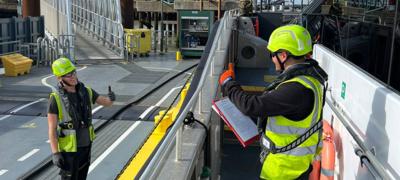
Apprenticeship scheme seeks to bring offshore wind opportunities to a wider range of young people and help close a nation-wide skills gap With applications closing on the 10th of April, UKSA and IoW College partner with the vessel operator to deliver thorough two-year crewmate training course
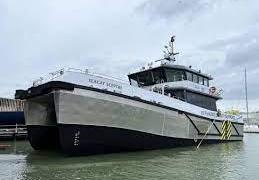
Hydrofoil system exceeds expectations with 10 percent emissions reductions alongside enhanced speed, stability and manoeuvrability
.jpg)
BAR Technologies’ patented FOSS system sets standard for hydrofoil CTVs aboard Chartwell CTV ‘Seacat Sceptre’
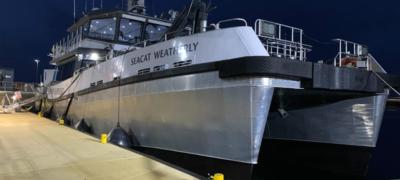
Seacat Weatherly began its assignments earlier this quarter to support Operations & Maintenance (O&M) activity for the Moray East service team working at the 100-turbine, 950MW capacity wind farm.
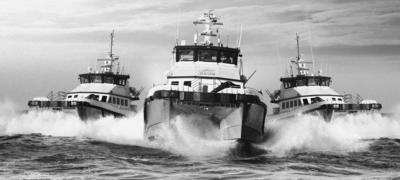
Class-leading OESV operator commits to pioneering trajectory of emissions reduction with Cedar Marine, calls for higher standards of environmental performance for offshore wind support
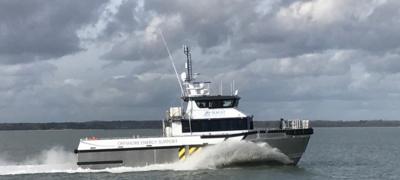
Vessel sees immediate 28% reduction in CO2 emissions during transit and first days of operation, highlighting potential for wider adoption of alternative fuels in offshore wind
